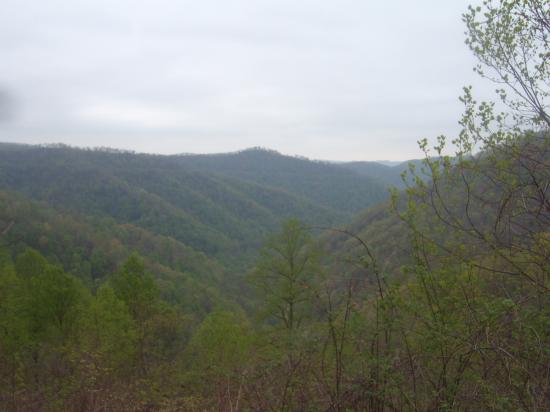Hello, below is an essay I wrote recently for my Ethnographic methods class. Its a craft analysis, analysing the craft of… dumpster diving, as part of the activist culture, focusing on Mountain Justice. Let me know what you think. Got anything to add?
The Dumpster Run, or, the Art of the Dumpster Fairy
“Hey man, you want to go visit the free box behind the grocery store?”, says the voice over the phone. “Uh…, tonight? now?”, I say “yeah”, he says, “like now-ish”. “Cool, I’ll call W, he wanted to come too”. Thus begins a dumpster run. A trip to glean from the trash a treasure. Within Mountain Justice and many other cultures, particularly those made up of individuals who, on one level or another, distrust contemporary, industrialized society, going dumpster diving is a weekly, or daily experience. On the surface and from the outside, dumpster diving is dirty, gritty, uncouth, and probably illegal, or at least should be illegal. But for some in MJ and other activist cultures beyond, dumpster diving is a reflection of values; it is civil disobedient direct action to confront the wasteful practices of Western society. It is enacting a whole system of beliefs about the world that are also reflected in the placement of a political advocacy sticker, in the cooking of a meal, in saving scrap lumber, in the handwritten sign over a lightbulb telling you to flip off the switch, in protesting on a street corner and writing letters to congressmen. Dumpster diving has an ideal form, a cultivated art, and the instance of a dumpster run is a chance to connect the stories of a movement, to connect novices to veterans, to retell the stories of the culture and bind activists together.
 The end result of a good dumpster dive is a couple of organized boxes full of produce, fruit, bread, and maybe a bouquet of flowers sitting on the porch of a friend, or even better, on the porches of several friends. A well done dumpster run brings in a lot of food, but not so much that a house is going to be left with rotting vegetables everywhere. The ideal run is quick, quiet, nearly invisible. A well done run brings home really unique things, like children’s toys, or an 11 pack of Smirnoff. But in the doing of a dumpster run, a culture is enacted, a value system manifested. Ideals are expressed in action, and the culture is refreshed. Sometimes a dumpster run is a novice’s introduction to action in an activist culture, serving as an act of enculturation. In the process, stories and memories are shared, new shared experiences lived, and the web of affinity which holds a geographically dispersed movement together is thickened.
The end result of a good dumpster dive is a couple of organized boxes full of produce, fruit, bread, and maybe a bouquet of flowers sitting on the porch of a friend, or even better, on the porches of several friends. A well done dumpster run brings in a lot of food, but not so much that a house is going to be left with rotting vegetables everywhere. The ideal run is quick, quiet, nearly invisible. A well done run brings home really unique things, like children’s toys, or an 11 pack of Smirnoff. But in the doing of a dumpster run, a culture is enacted, a value system manifested. Ideals are expressed in action, and the culture is refreshed. Sometimes a dumpster run is a novice’s introduction to action in an activist culture, serving as an act of enculturation. In the process, stories and memories are shared, new shared experiences lived, and the web of affinity which holds a geographically dispersed movement together is thickened.
Artifactual
The right kind of gear is needed for a good dumpster run. Usually, and in the case of the dumpster run I observed for this analysis, it is a nighttime activity, and so flashlights are necessary. Instead of a two pound mag light, dumpster divers are usually going to be found with a fist sized headlamp in their hands (rarely actually on a head). Headlamps are small, versatile, and usually have LED’s instead of the less efficient bulbs found in traditional flashlights. The first question I asked when I met up with N to go on this dumpster run was if he had a headlamp.
Other important artifacts of the dumpster run cluster around clothing and physical preparedness for an activity that isn’t exactly sanctioned by your  insurance company. Closed toed shoes, long pants, dark clothes, and gloves (if its cold or if you prefer not to have dumpster juice on your hands) are all common components of a run.
insurance company. Closed toed shoes, long pants, dark clothes, and gloves (if its cold or if you prefer not to have dumpster juice on your hands) are all common components of a run.
Dressed in their dumpster fairy costumes,the divers pile into a car, telling stories and jokes and catching up. Heading towards the grocery store, they casually turn the car to the back of the building, and cut the headlights, pulling the car to a nook near the big green “free box behind the grocery store”. As the divers climb up and into the dumpster, they start to harvest their finds. One or two inside, another waits out, as trash is flung aside and produce is picked out, and put in discarded cardboard boxes. The dumpster box is one of the most prolific artifacts in the making of a dumpster dive. The produce comes straight out of the store in these cardboard boxes, and is flung haphazardly into the receptacle. The divers duty is to find the least polluted vegetables, and put them back in their boxes. The box is filled, and handed over the lip of the thick green metal, and received by the diver on the outside.
Each find is shouted out as it appears beneath the pale light of the headlamp. “Peppers! Carrots! oh man, is that, yeah, ACACADOES!”. Another box filled, and over the top. Bread is its own artifactual category. As bagels, sliced loafs, french breads or croissants, bread is different from veggies, found in different dumpsters at the same store, the freshness of a 3 day old loaf different from that of a 3 day old squash.
One has to think though, about what this box, or half dozen boxes, will look like at home. There is usually more fresh-enough food in a single dumpster to feed 8-10 people for a couple of days. If a diver only lives with 4 others, she has to think about where this food will go. Boxes pile up. Food rots. Rotting food is a common artifact produced, though not universal nor ideal, in the art of dumpster diving. But one last, common artifact resolves and recycles the odious waste: the compost pile, and its eventual byproducts, compost and humus.
Nominal
Words that are heard in the context of a dumpster dive are mostly simple. “They’ve gone for a Dumpster dive, or on a dumpster run,” or, “the dumpster fairies delivered us a free box”, or “that bag has 10 avocadoes in it, but it also has a half a leg of ham. Eww, not worth it.” or “Freegan” are all words and phrases that litter the vocabulary of a diver. Freegan is a term taken by many activists in this activity, a combination of ‘vegan’ and ‘free’. Veganism is not just a diet choice, but a political choice, one meant to decrease your material support for the system of processed foods and industrial agriculture, and increase your support for more just sources. Veganism is voting with your dollars, and Freeganism is voting by abstaining from dollars, by denying demand. Dumpster fairies, light and quick, run to the free box and return with the spoils, but only those ‘worth it’, those that are unlikely to hurt the health of a fellow freegan.

Different communities of freegan dumpster divers have a plethora of names for their art. Skip Diving, binning, skallywagging and urban foraging are spoken by other communities to describe saving a bit of trash from the landfill. Compactors and locked bins are names for obstacles and deterrents, cops are the folks that might tell you to get out and issue you a citation for trespassing. Score is the name of a particularly good find, as well as the act of acquiring a haul from your run, i.e. “what did you score?”. Dumpster juice is the byproduct of juices, water, grease and whatever other liquids seep to the bottom of a large dumpster.
Substantial
Dumpsters smell. They are a mash up of trash bags full of receipts and rotting meat. Bouquets of slightly browned flowers, and thawing frozen dinners. But, they are not all putrid, and the smell of a dumpster, and the haul that comes from it, are important indicators of a successful dive. A particularly smelly dumpster is ‘not worth it’, likely to be filled with polluted meat. A dumpster full of fresh-enough produce will probably smell fairly neutral. A dumpster full of everything bagels will smell invitingly of everything bagels.
A haul ought not to be too big. Taking a hatchback car and three people, hoping to score enough food for 8, only a couple of boxes should be needed, and too much will stink up somebodies kitchen. Whatever the haul, it is taken home, and after an ideal run, is sorted by type of food, then devided for various houses or apartments, and distributed via dumpster fairies. This giving and support between the community of activists or freegans or friends or the needy is also an important part of the whole craft, part of the value of mutual aid.
For days a house of divers can eat nothing but free food. Incorporated into meals, into canning projects, into feeding large gatherings or meetings of other activists, dumpstered food sustains other rituals and experiences which further bind a social movement network together.
The dumpster run, is just that, a run. In the doing of a dumpster dive, one must be fast, quiet, sneaky (or casually confident and quiet). Laws vary by municipality, the watchfullness of police and security depend on the location. Dumpstering is an act of civil disobedience, an idea and value which resonates throughout the Mountain Justice culture. Breaking an unjust law, like that which keeps waste food and reusable objects under lock and key, is what is moral in a culture unified by resistance to a system of unjust laws and practices that level mountains to extract coal. It is rebellion with a cause.
Dumpstering also resonates with the common sentiment of reducing waste, of treading lightly, and reusing as much as possible. Dumpsters represent mountains of waste being buried in landfills, and to reduce that burden, and whats more to reuse it, is a cultural imperative. What is left over after a dumpster run is, ideally, composted, reduced, and reused as soil fertilizer to grow more food.
A good dumpster run is one that exhilirates, that empowers, that feeds and that connects the divers and the broader community that they are a part of. Each run is unique, and can lead to stories that are told again and again. A good dumpster run brings in food for several, and an ideal run brings in a diversity of goods, from new shoes to tupperware. An otherwise sober, straightedge freegan might drink a beer from a dumpstered 11 pack of Smirnoff. A good dumpster run both feeds a hungry activist and expresses through repeated action some of the same values and beliefs which motivate her to protest a coal company’s use of strip mining for coal. A dumpster run may be the first direct action a new activist takes, but it connects him with a tradition, and with a shared experience, that initiates that individual into a community.











